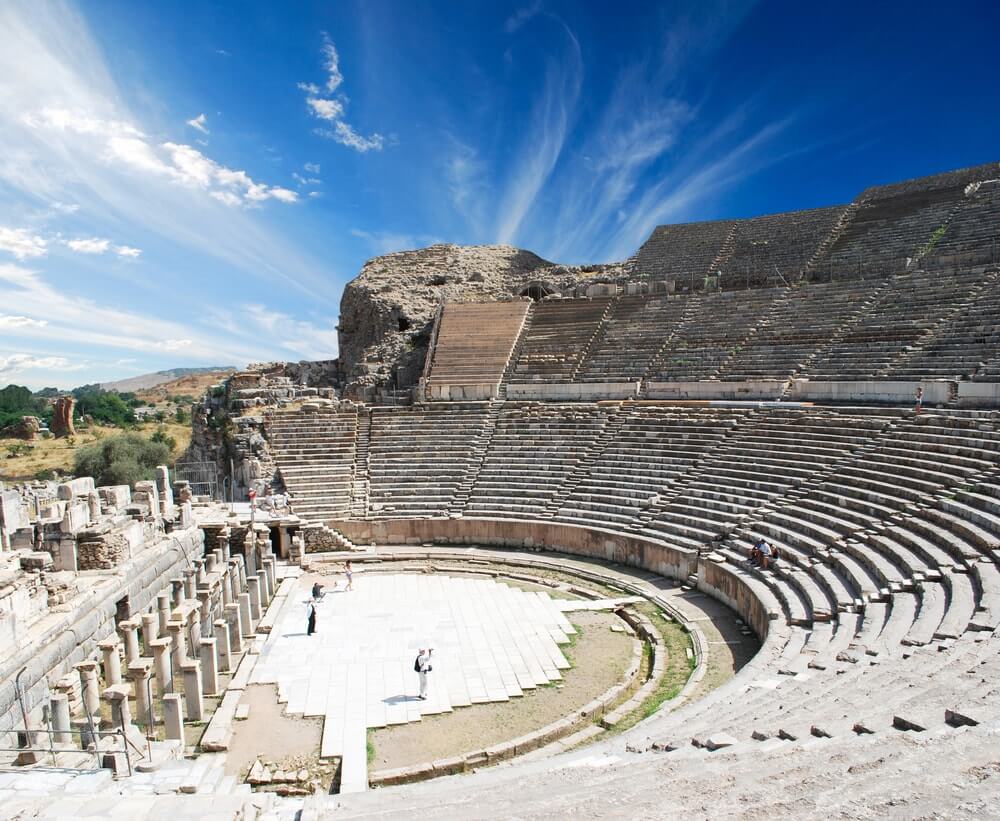Vacation attractions in Ephesus today from BestEphesusTours? See the Pollio Fountain: According to the Latin and Greek inscriptions, this building was built as a “Mausoleum” for C. Sextilius Pollio by his stepson, in the area allocated by the city administration. Thus, the person who built the Basilica and Marnas Aqueducts and dedicated them to the emperor and the city was honored on behalf of the city. There is also a small pool inside. The water of this pool comes from the wall of the Agora. On the bench in the pool was the Polyphemos sculpture group, which is exhibited today in the Ephesus Museum. Discover even more details at Ephesus tours from Kusadasi port.
Running through the center of Selçuk are the remaining broken arches of this Byzantine aqueduct, which is more of a tourist attraction these days due to the huge stork nests that top some of the arches. If you arrive in town in spring or early summer, you’ll likely be able to spot storks sitting regally in the nests. The best chunk of aqueduct remains is found on Inönü Caddesi, right in the town center just across from the train station. There’s another section on St. Jean Caddesi, leading up to the Basilica of St. John. After dark, the aqueduct remnants are lit up and make a great subject for some night shots of town.
Endless struggles between humans and gods were depicted. The roles were performed by wearing masks with different expressions instead of facial expressions. Over time, these performances took shape and formed the contemporary theater of today. Here comes the story of the laughing and crying masks of the theatre. The entrance fee to the Ephesus Ancient City also includes the theatre, the same goes for visiting hours. The temple was built by P. Quintilius in honor of the visit of the emperor Hadrianus and is estimated to have been finished before 138. The inscribed pedestals in front of the temple were built between 293-305 AC. On the door lintel in front of it, the foundation legend of Ephesus City is displayed with reliefs. Bronze statues of the Roman Emperors Diocletian, Constantius, Maximian and I. Theodosius were erected in 300 AC. There is a statue of Emperor Hadrian in the cella.
This citadel-like basilica once occupied the whole breadth of the hill it sits on and was ranked with the Hagia Sophia in Constantinople (now the Aya Sofya) as one of the Byzantine Empire’s largest churches. According to tradition, the grave of St. John is under the church. Originally, a mausoleum with a domed roof borne on four columns was built over the grave, but the Emperor Justinian replaced this simple monument with a three-aisled basilica on a Latin-cross plan boasting six domed roofs. Including the narthex at the western end and the arcaded courtyard, the basilica was 130 meters long and 40 meters wide. After the Seljuks captured Ephesus in 1130, the church was converted into a mosque and later served as a bazaar until it was finally destroyed by an earthquake. Although only partially restored, the basilica ruins that remain give a good idea of the awesome size of the original building.
Ephesus Ancient City has always been a highlight for history and archaeology lovers. But Best Ephesus Tours tailor made programs has options to fulfill your day according to your interests. Best Ephesus Tours also have tours for those who has interest into having less history but having local wine in an authentic village. Also, have tours for those who likes to enjoy shopping in local markets and having courses of Turkish food cooking class. Eventually as an experienced tour company Best Ephesus Tours aim to have guests going back ship with remarkable memories. Read more information at https://www.bestephesustours.com/.
